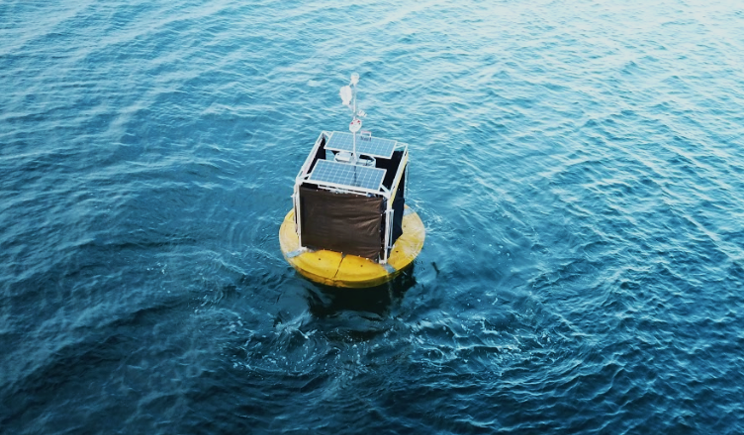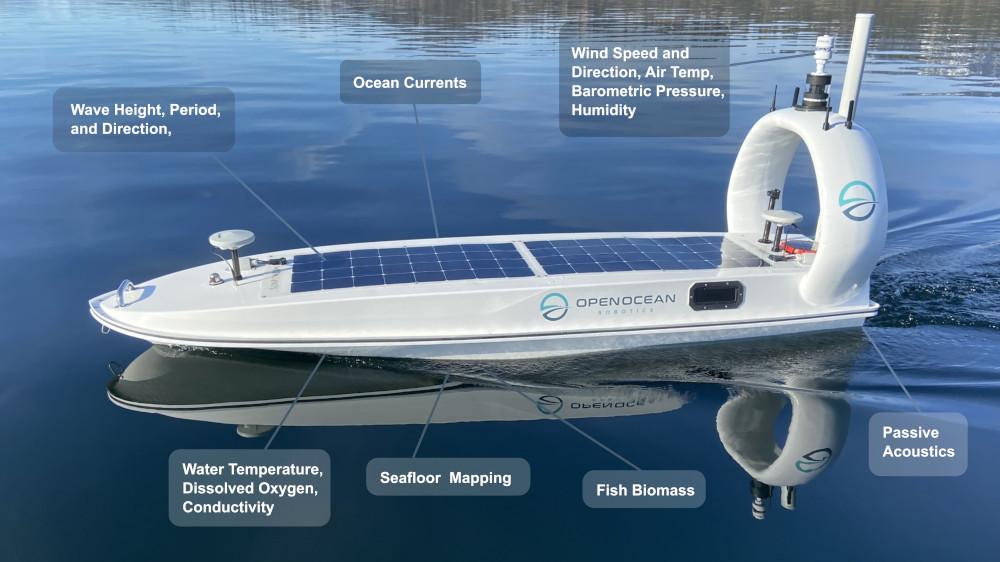Not only do we like creating new products and solutions, we enjoy celebrating when other companies – particularly Canadian companies – build cool things.
InDro Robotics recently took part in a Trade Mission sponsored by NRC-IRAP – the National Research Council’s Industrial Research Assistance Program. The program involved some 20 companies heading to Portugal for meetings with leading Portuguese innovation companies and agencies, as well as attending the Global Innovation Summit focussed on a sustainable future.
It was a busy, whirlwind week. But one of the highlights was meeting some of the other Canadian companies in the innovation space and learning more about that they do. So we thought we’d take a moment and highlight a few of them.
Oneka Technologies
See that buoy floating below? It’s pretty special.

The Oneka system consists of buoys tethered just offshore from an area in need of fresh drinking water. The movement of the waves provides the energy to force the seawater through reverse osmosis filters. The result? Fresh water in places that need it most.
As the system performs its extraction, it also produces a brine containing roughly 30 per cent more salinity than the surrounding seawater. That brine is returned to the ocean, but quickly diluted.
Each buoy requires about 10 square metres of space on the ocean, so multiple buoys can be placed within close proximity. Use-case scenarios include communities with limited access to drinking water, natural disasters where the drinking water has been disrupted – and even seaside resorts in need of desalination.
$5.5M funding round
Last year, Oneka announced it had completed a $5.5M funding round led by Canadian investor Innovacorp and American investor Baruch Future Ventures.
“The world is running out of clean water and Oneka has a solution. It works, it’s affordable, it’s better for the environment, and it can be scaled from local disaster relief and regional demand all the way to meeting utility needs,” said Jonathan Saari, investment manager at Innovacorp in an Oneka news release. “It’s exciting to watch the team build and test their world-changing technology…”
The release says the company is working its first two commercial deploments in the US and Chile. Oneka’s solution produces zero CO2 emissions, and a single device can produce up to 10,000 litres of fresh water per week, enough for 450 people.
Earlier this year, Oneka won the US Department of Energy’s Waves to Water challenge, a competition designed to accelerate the development of small, modular, wave-energy-powered desalination systems. The three-year-long challenge netted the company $500,000 US.
Open Ocean Robotics
And here’s another Canadian company doing innovative things on the water.
Open Ocean Robotics is a Victoria-based company that really grabbed our attention during the Trade Mission trip.
Its solar-powered vehicle (with a patented self-righting system), can travel the ocean for months at a time, sending back critical data in real-time. The model seen here is called the Data Xplorer, and the company also has a model that utilizes rigid sails.

Long-term missions, zero emissions
The Open Ocean robotics USV is suitable for long-range missions lasting months, with the vehicle capabale of either autonomous or remotely operated missions (pending how remote those missions are). Here’s what Open Ocean says about the device:
“Powered by the sun, it can travel on the ocean for months at a time collecting ocean and environmental data using its suite of sensors. It sends this information back in real-time through secure communication systems and clients can control the USV from anywhere in the world using our user portal. Capable of travelling in both coastal and open-ocean waters, and with a customizable platform for multiple sensor integration, it offers the ability to understand our oceans in a whole new way. Data Xplorer is designed to endure all sea states and is self righting.”
Here’s a look at Data Xplorer in action:
And yes, these USVs can capture a *lot* of useful data: This graphic comes from the Open Ocean Robotics website.

Perhaps even more impressive? CEO Julie Angus, in addition to holding multiple degrees (including a Masters of Science in molecular biology), was the first woman to row across the Atlantic Ocean, from mainland to mainland.
ACEL Power
The Vancouver-based firm focuses on what’s likely to be a booming market in the years to come: Electric outboard motors. The company says its motors deliver 30 per cent more torque than a comparable horsepower internal combustion engine, plus offer a lifespan five times that of a conventional outboard.
All that, with zero emissions.
The company is about to commence manufacturing, and is now taking pre-orders on 50, 60, 75, 100 and 150-horsepower motors. Motors come with the complete ACEL Power system, including:
- Engine
- Battery
- Inverter
- Throttle
- Onboard Computer Screen
- Keyless start Fob
Here’s a look at a prototype engine in action:
You can find more info – and even pre-order a motor – right here.
And finally…
A brief look at one more company from the trip (though we wish we had room to highlight them all).
Ashored is not in the robotics space, but it has a very intriguing product that will help prevent sea mammal entanglements and hopefully make life easier for people in the fishery industry who use traps for lobsters, crabs etc.
Normally, those traps are dropped to the bottom and attached by lines to small buoys on the surface. Those lines can often entangle whales and other sea creatures. In fact, if whales are spotted in areas where there are active traps, fishers can be instructed to remove traps until the whales move out of the area.
The Ashored system offers a clever solution. Its MOBI (Modular Ocean Based Instrument) keeps the line on the ocean floor until the fisher returns to collect the gear. The rope and small buoy are contained in a cage that is attached to the other traps. Using an acoustic signal (or timer), a magnetic lock is released and the buoy floats to the surface.
You can check out the system in this excellent video:
InDro’s Take
The companies on that recent trip, without exception, had impressive innovations and/or solutions. A lot of them were in the maritime space, where we’re seeing an increased use in robotics both on and beneath the surface.
There’s also a growing emphasis on sustainability, in conjunction with net-zero carbon emissions. There can be no doubt there are good use-cases for wave-powered desalination systems, solar-powered Uncrewed Surface Vehicles, electric outboard motors – and more. We look forward to seeing more from these Canadian companies, as well as the others who were on the trip.
In closing, a quick shoutout to Andrew Bauder, Léonie Hyppolite and Scott McLean from NRC-IRAP for organizing and excellent and productive Trade Mission. Thank you.

